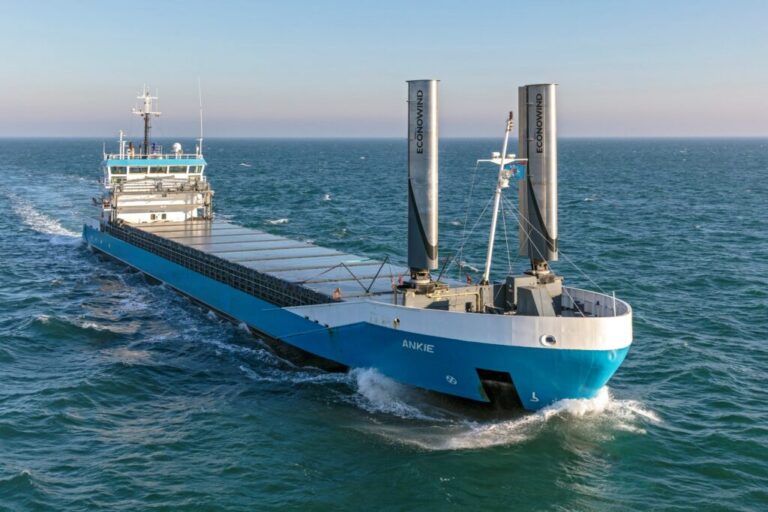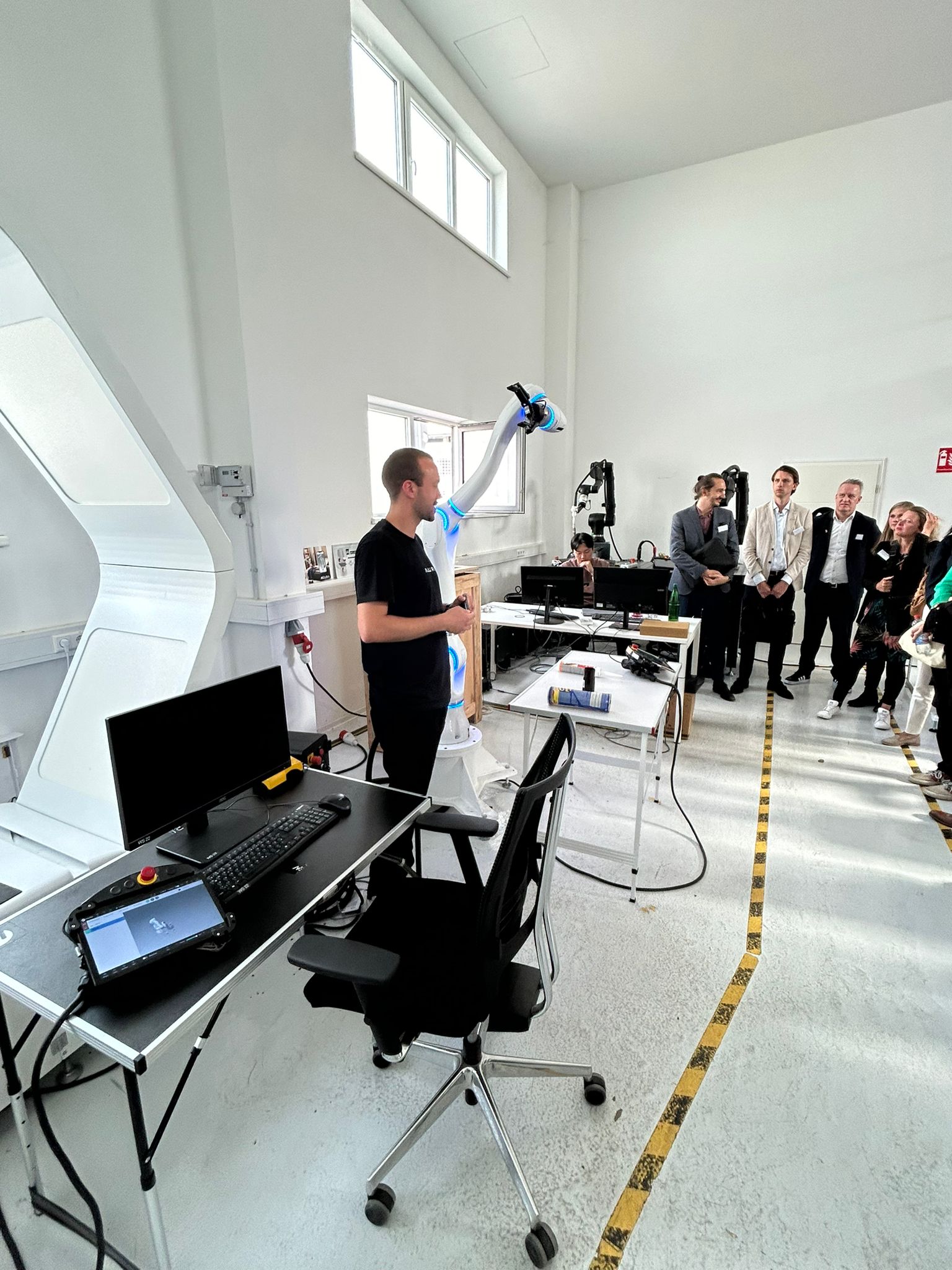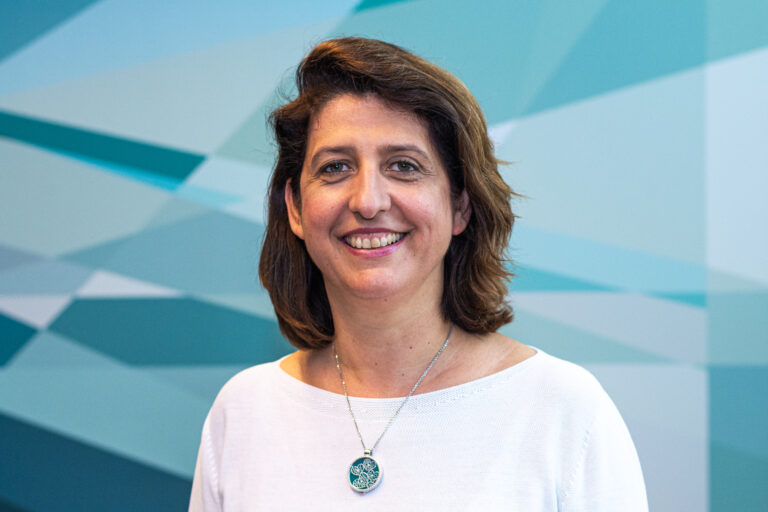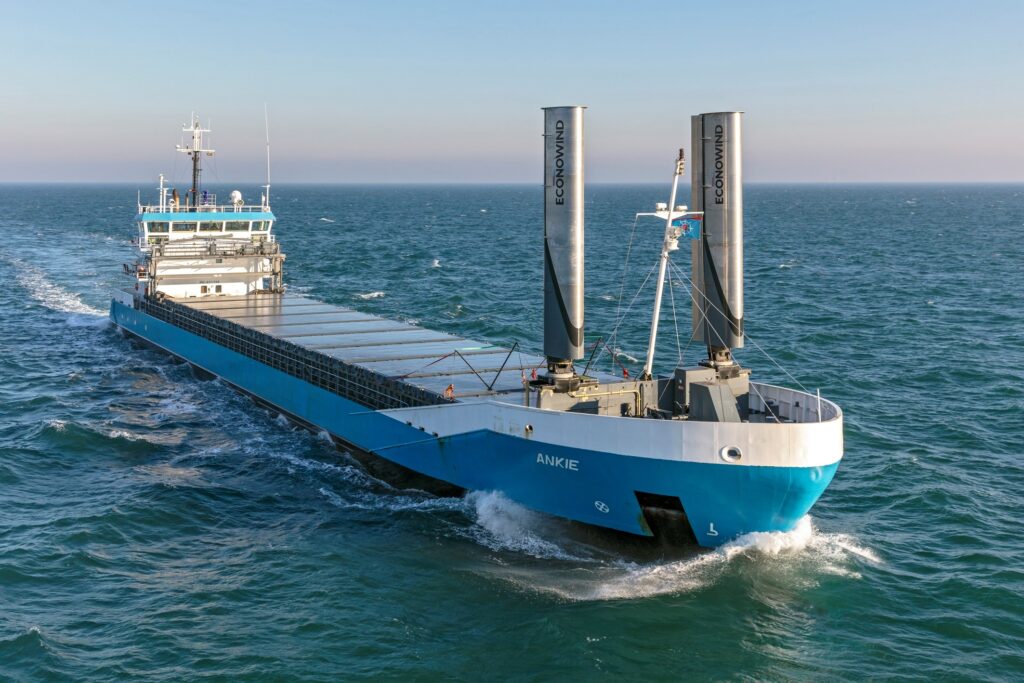Jean Jacques Cousteau (the French marine researcher, film-maker and environmentalist who died in 1997) applied for a patent for turbosails back in the 1980s. Instead of sails made from canvas fabric, his boat used aluminium structures that looked more like chimneys than sails at first glance. The shape allowed these structures to act like aircraft wings, with the difference being that the aerodynamics created a forward propulsive force rather than upward lift. To make the wings as strong as possible, they use air extraction that deflects the airflow even more.
Cousteau’s boat had an engine, so he was not using the turbosails to sail by wind power alone but as additional propulsion. His goal was to save fuel.
Solutions for a current problem
Now, four decades later, saving fuel in shipping is a very hot topic, not just because of increased fuel prices but above all because of global warming. Ships also need to start emitting less CO2 as soon as possible.. At the moment, shipping is responsible for two to three per cent of global greenhouse gas emissions. It is also expected that the maritime sector is going to grow in the coming decades, making sustainability is an important point to focus on.
The development of VentoFoils
For a long time, not much was done with the invention that Cousteau had developed alongside the experts. In recent years, though, large seagoing vessels are using the same ideas as the French adventurer’s patent (which expired in 2010). One year before that, in 2009, Guus van der Bles started a study into the technology for wind-assisted ship propulsion, in addition to his work as director of development at Conoship. He expanded on Cousteau’s turbosails. In 2016, his efforts led to the foundation of eConowind, the company that produces VentoFoils: turbosails 10 to 20 metres in height for large seagoing vessels over 100 metres long.
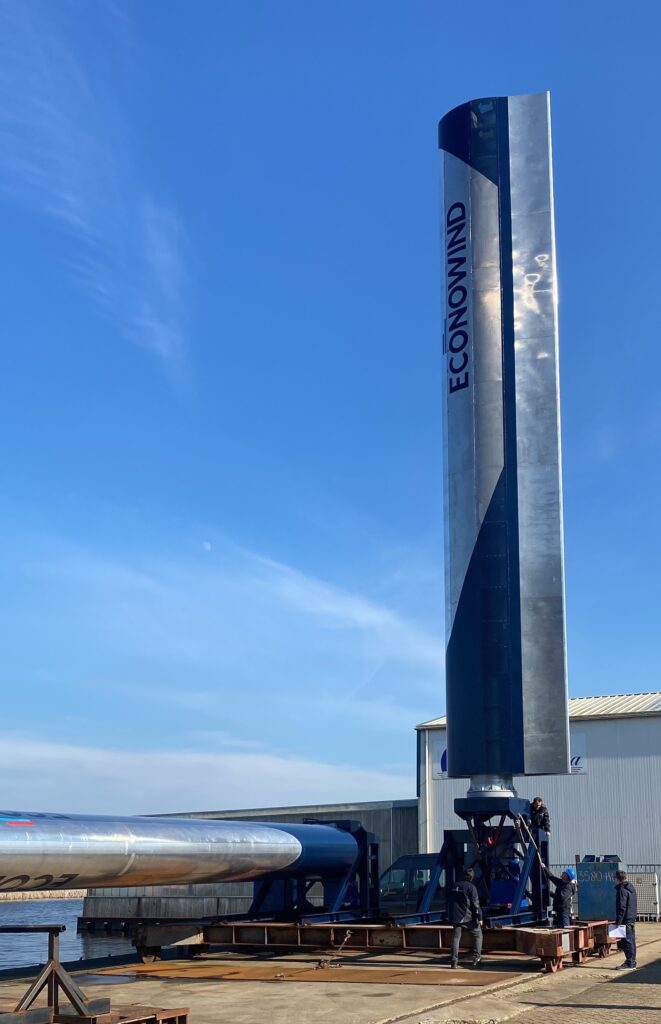
Up to 20 percent fuel savings
“It would be a waste if seagoing vessels didn’t use the free energy rushing over their decks in the form of wind,” says Frank Nieuwenhuis, the CEO of eConowind. “We can fit our VentoFoils onto existing ships quickly and easily, so they can start saving on fuel immediately. Sailing solely on wind power isn’t possible because you would get the same problems as with traditional sailing boats: when there’s no wind or a headwind, a ship like that cannot move forwards. Too much wind is not good either, because that exerts too much force on the VentoFoils. That’s why they can be folded away. All of this mustn’t be an extra burden on the captain, of course: he still needs to be sure that the ship can get to the destination on time. That’s why our solution is always combined with a ship’s engine. Using it makes savings on fuel consumption of up to twenty per cent possible.”
Use of AI
The big challenge is taking account of all the circumstances that can affect the propulsive power of the VentoFoils. It is not merely about the wind force and the direction the wind is coming from, but also about the current on a shipping route, how big the waves are and how they behave in relation to the vessel. And just to make it even more complicated, subtle adjustments to the position of the VentoFoils can make a huge difference in their pulling power. In other words, there are a lot of factors to take into account. For many people it is hard to oversee all of it and draw the correct conclusions, so eConowind decided to use artificial intelligence (AI). A request to use the MIT scheme for this was accepted last year. (“MIT” is a Dutch term for SME innovation promotion for regions and key sectors.)
MIT in practice
To date, eConowind has fitted four seagoing vessels with VentoFoils and several more will follow later this year. Several of these vessels will have sensors that are continuously measuring the propulsive forces. “The principle of AI is that it can find its own optimum,” says Nieuwenhuis. “That requires a lot of calculation plus an intelligent search component. But these types of analyses can only be made if there’s enough usable data available. We’re now using the MIT budget that was awarded to work on collecting that data.”
Cooperation
eConowind is now collaborating with MARIN, a company that uses data science to solve problems in the maritime sector, and De Laat Automation, a mechanical engineering company with a scientific background. “When we have made some more progress, we’d also like to get in touch with commercial parties who are a bit further along in terms of AI,” adds Nieuwenhuis. “And I expect that the Netherlands AI Coalition can help us in that.”
More information?
Visit eConowind‘s website or send your questions to Frank Nieuwenhuis, the CEO.
Interested in the MIT scheme?
SMEs – many of which are start-ups – have an important economic and innovative role. Research has shown that SMEs come up against numerous obstacles when implementing AI. The AiNed MIT call for bridging the gap between the knowledge base and the application of AI innovations is currently open and is supported from the AiNed programme developed by NL AIC. This scheme will be repeated every year until 2026. You can keep up to date on the AiNed programme website.
